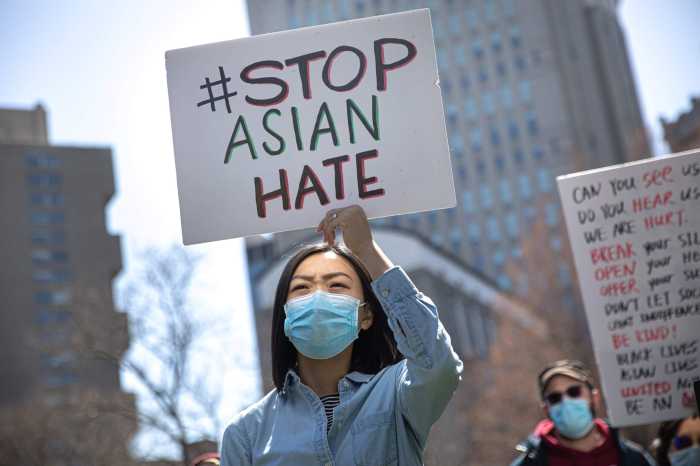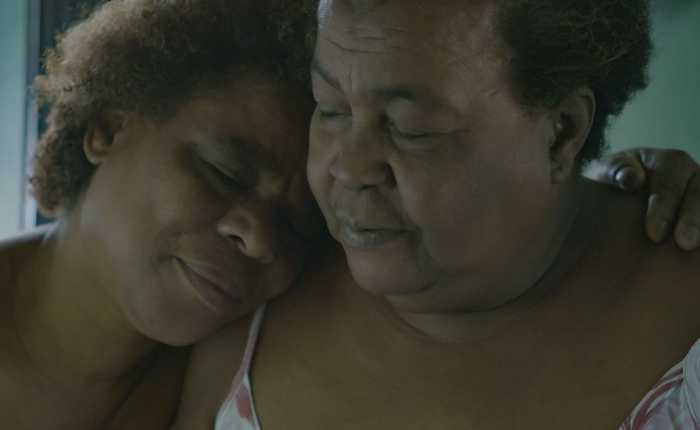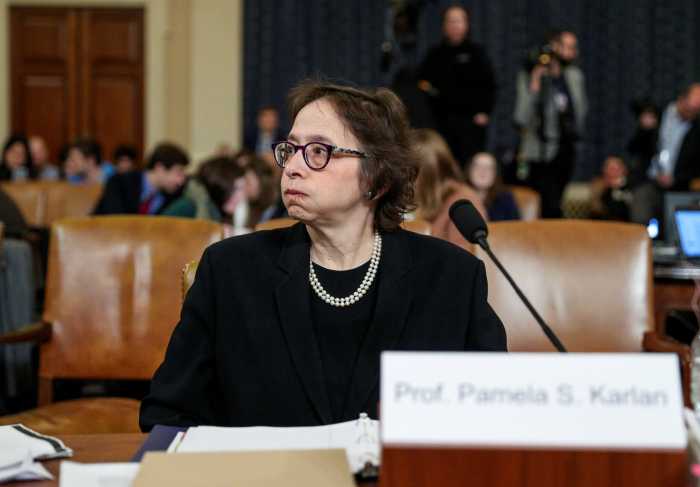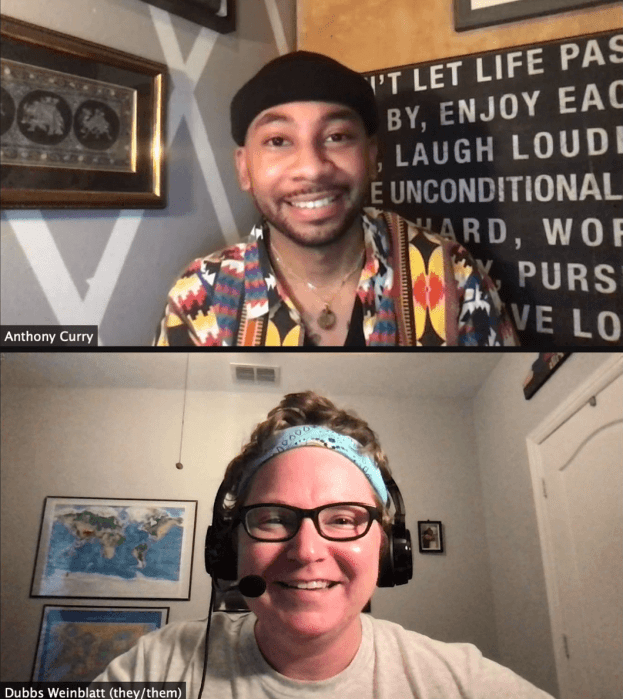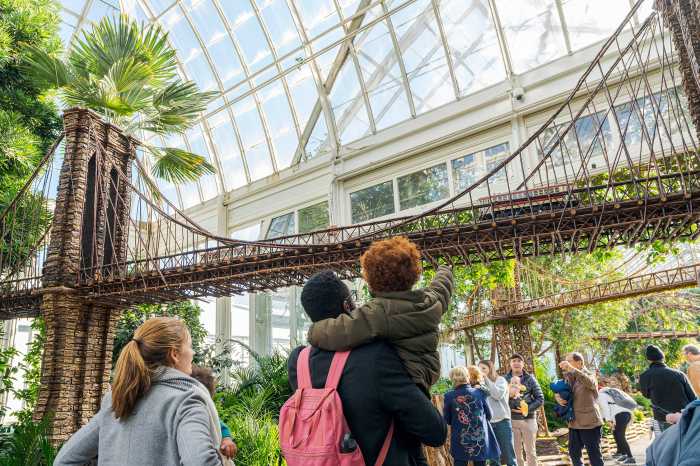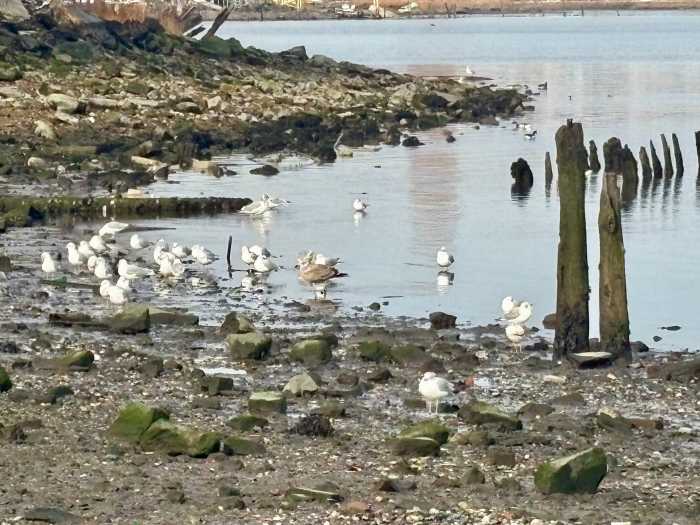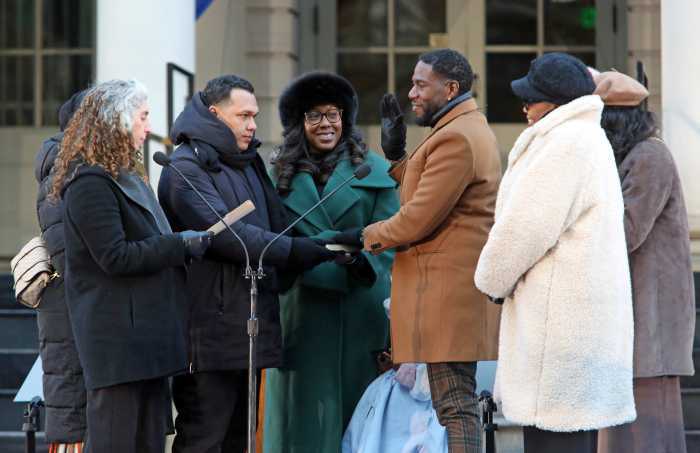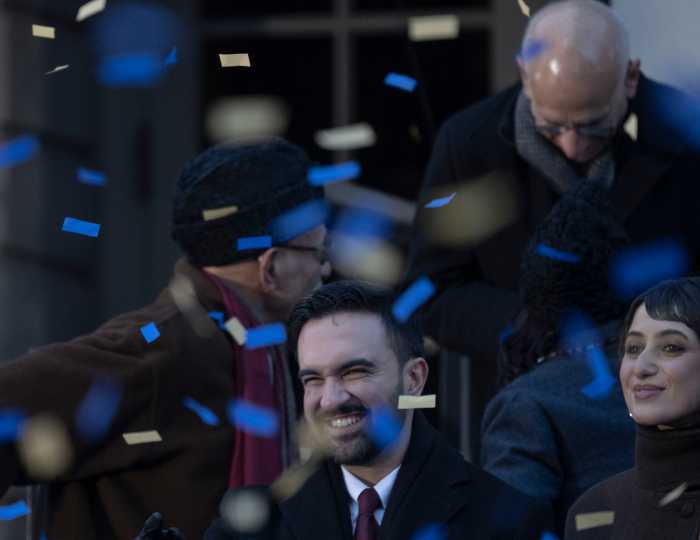“Why are the dyke bars disappearing?”
Lea DeLaria (“Orange Is the New Black” and “Broad City“) poses the salient question within the first moments of the 20-minute documentary created by The Lesbian Bar Project, a groundbreaking fundraising campaign. DeLaria, an actress, comedian, and self-described “big butch dyke,” is the narrator and executive producer of the project’s PSA. She floats her question to Lisa Menichino, the owner and operator of the Cubbyhole, a longtime favorite NYC lesbian hotspot and community haven that brandishes colorful decor, a jukebox and drink specials.
“It used to be that the lesbian bar was the only place you could go to meet anyone, whether it was romantic or social,” Menichino explained during the short PSA’s introduction. “You didn’t have access to anything else. As mainstream society started to accept gay people more and more, you didn’t need to just go to a lesbian bar. You take it for granted, not realizing this is something you have to support, you have to nurture, you have to go to.”
In a nation where there are 8.5 million lesbians, there are just 21 lesbian bars. The disappearance of these institutions are greatly felt by the owners, operators and patrons who inhabit these radical spaces. Cognizant of the financial strain experienced by these lesbian bar owners, filmmakers Erica Rose and Elina Street launched the Lesbian Bar Project. At the pandemic’s peak, the women ran a fundraiser that gathered nearly $120,000 for struggling lesbian spaces. The funds were split evenly among 13 bars, helping them to live on to fight another day. The fundraising effort has a stealth secondary mission to educate those who know very little about the evolution and decline of vulnerable and sacred spaces. Following last year’s success, Rose and Street are looking to raise $200,000 throughout the month of June.
One of the bars featured during the film is the Black-owned bar Herz, which is located in conservative Mobile, Alabama. The bar’s commitment to the community greatly impacted filmmakers.
“[Herz] goes back to the fundamentals of hospitality, back to the fundamentals of community, back to the fundamentals of what a bar can do for an area that isn’t necessarily LGBTQ-friendly,” Rose told Forbes during an interview. “We say it in the film, down in the South it’s f****** hard to be gay sometimes. You need these bars as a safe haven… they make it a priority that not just lesbian women feel safe at Herz, but all people feel safe at Herz.”
Unfortunately, there aren’t very many spaces like Herz left in the US.
Across the nation, the number of nightlife spaces dedicated to queer and gay women has been reduced significantly. In the late 1980s, there were an estimated 200 lesbian bars in the country, according to the Lesbian Bar Project. By 2019, researchers indicated just 15 bars remained nationwide. As of June 2021, it’s presumed that number is closer to 21.
Today, sizable metropolitan areas with ample lesbian populations, such as Los Angeles, Chicago, Houston, St. Louis (after the 2019 closure of the iconic Novak’s Bar), and Philadelphia (Toasted Walnut officially closed in January 2021), have zero lesbian bars. The absence of “ladies bars” erases legacies that matured in the face of anti-cross-dressing laws, criminalization of “vices,” and the prohibition of public displays of same-sex intimacy. In the 1960s and 1970s the perceived immorality of the establishments meant they were frequent targets of raids and criminalization. The prejudiced arrests of LGBTQ people, including trans and gender non-conforming folks, led to incarceration and hastened employment challenges, putting the economic stability of entire communities at risk. The price of queerdom frequently led to homelessness and, for survival, entry into the perilous world of sex work. Certain piers, lesbian/gay bars, and the queer ballroom scene were some of the only respites for such individuals.
Among many, writer and social commentator Roxane Gay has gone on record stating the importance of “safe spaces for people of marginalized genders — including transgender and non-binary people—to gather.” The camaraderie experienced in lesbian and queer-centric spaces isn’t easily duplicated and was ferociously hard-fought. Many historical events were first developed during clandestine conversations in various lesbian bars.
That said, these spaces are sometimes a microcosm of the world in that there have been incidents of racism, biphobia and transphobia, and racism. As recently as the 1980s, discriminatory tactics were employed by many popular bars to exclude queer women of color and trans women, including “carding” and dress codes. The exclusionary practices led to many seeking alternative safe-havens. Salsa-Soul Sisters developed as the first lesbian organization created by African-Americans and Latina Americans. They offered members a social and political alternative to the lesbian and gay bars, which “historically exploited and discriminated against lesbians of color.”
As the world changed, so have opportunities to find community. Lesbian bars have become a less popular part of lesbian social life due to increased same-sex partnership acceptance, safe spaces carved out in online communities, and a broad cultural shift in terms of fluidity. “Queer” has been reclaimed and chosen term, frequently replacing gay and/or lesbian and encompassing the broader LGBTQ community. Many have begged a need for mixed LGBTQ spaces that include and honor gender-fluidity, amassing umbrella terms, and diversity.
Some lesbian hotspots have risen to the task and adapted a new world order. Lisa Cannistraci, owner of Henrietta Hudson, a queer restaurant and lounge in Manhattan’s West Village neighborhood, asserts, “A lot of women who love women don’t identify as a lesbian. We have to break the cycle of being exclusionary within our community.” Cannistraci and others hold on to their history while raising the banner of inclusivity as a mainline objective, stating that lesbian bars indeed exist for all marginalized genders. Those that can evolve with the times only need to worry about the threat of financial ruin and squaring off with gentrifiers.
Already fighting an uphill battle, surviving lesbian institutions found compounded stress when COVID-19 struck. Initial closures, regulations on capacity, reduced staff, and reduced service hours affected the wages and well-being of many of the women, trans people, and non-binary people who work in those establishments. Additionally, the women in those bars, often with less disposable income, must also keep up with climbing rent costs and the impact of shifting supply chain.
The dip in lesbian bars has not meant that queer folks are congregating or celebrating; they’re simply diversifying how they connect And while we’re seeing lesbian bars disappearing in real life, they’re burgeoning on screen, according to the New York Times. The showrunner for the CW series “Batwoman,” Caroline Dries, essentially resurrected famous Los Angeles spots, such as the Normandie Room (closed in 2009) and the Palms (closed in 2013) on the set of the series. At least in the fictional world of Gotham City, the women can visit the bar, Hold Up, and find sanctuary. Likewise, lesbian bar culture lives in Showtime’s “The L Word: Generation Q” and “Vida.” The stations give the primary characters settings where they can meet and feel supported.
The surviving bars continue to honor a rich tradition, one that’s changed the narrative around nightlife. It isn’t solely about booze or sordid acts in the shadows; it’s about community. Less than half a century ago, the consequences for living and celebrating loudly would have been dire. Lesbian bars will continue to change and continue to move toward the queer model while resonating as a movement.
“Without space,” the Lesbian Bar Project website states. “We lose power, validity, community safety, access to intergenerational dialogue…with the support of our community; we can make sure these bars receive not only the financial support they need but the reverence they deserve. When our history isn’t protected, we must protect it ourselves.”
To learn more about the Lesbian Bar Project, visit: https://www.lesbianbarproject.com


